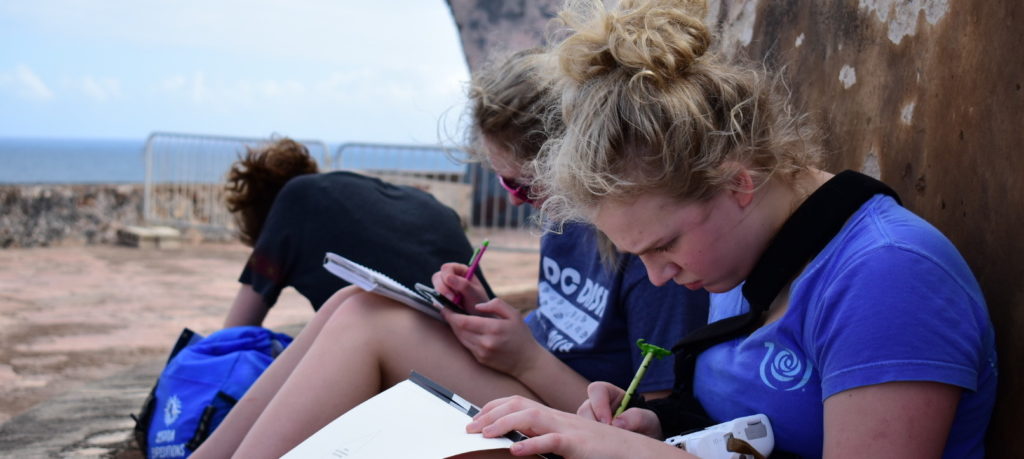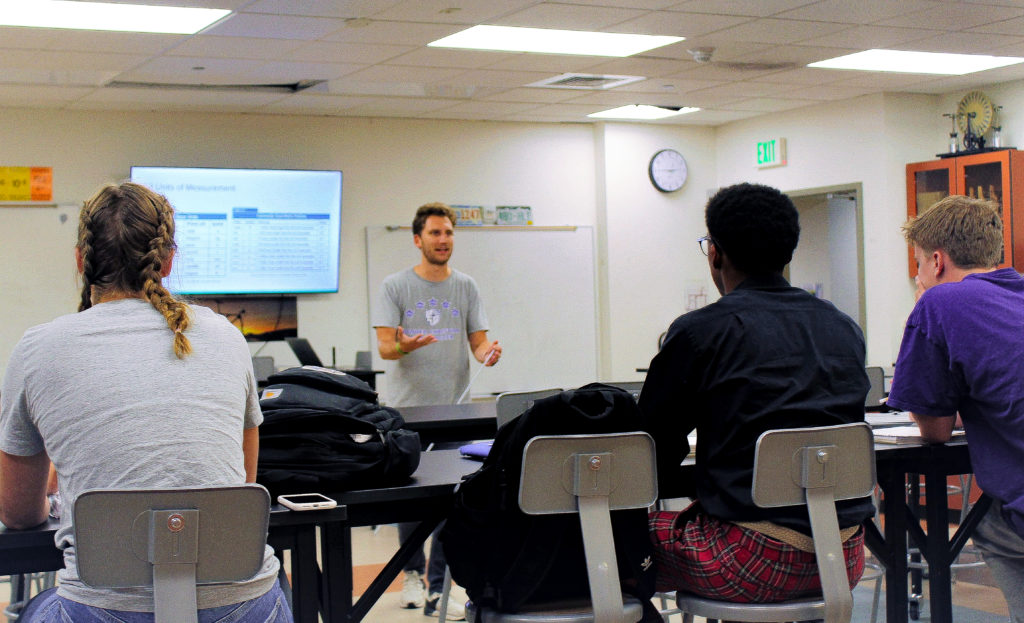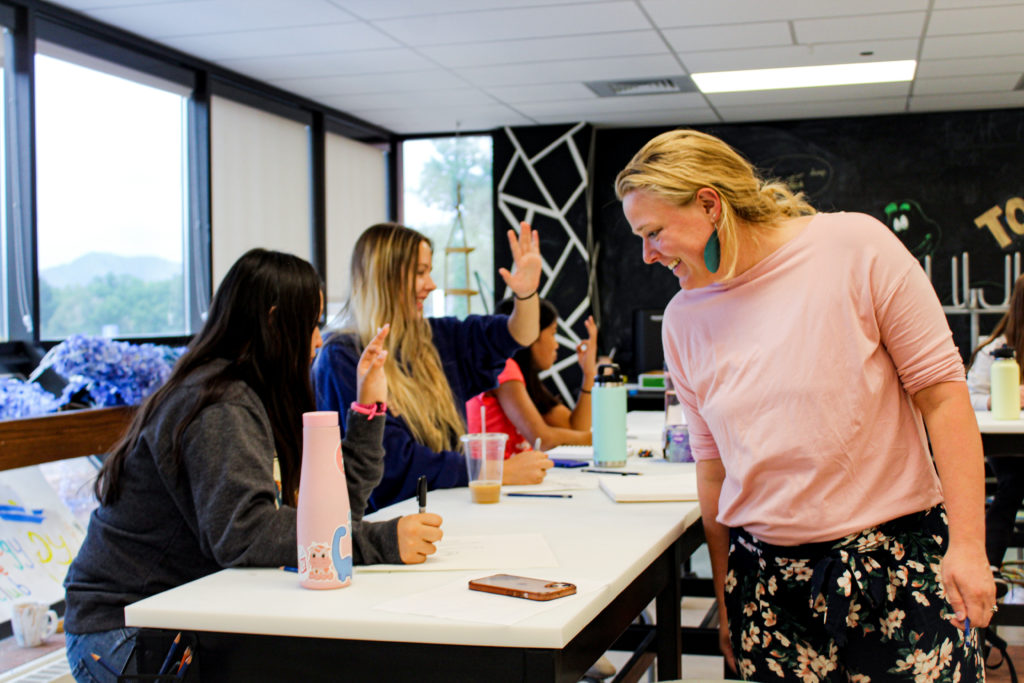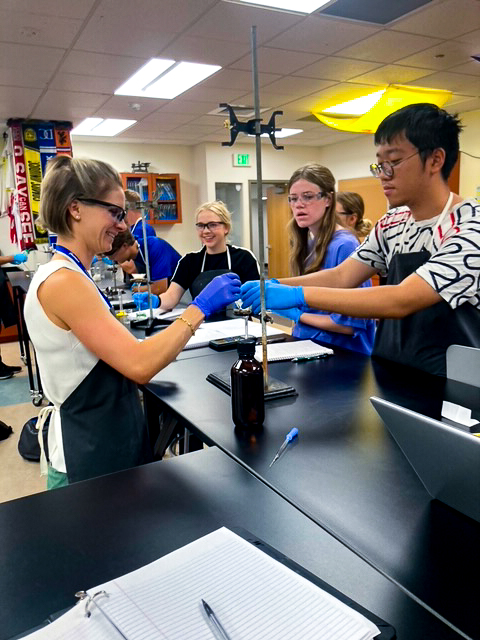Last month, we started our dual enrollment series highlighting the difference between Dual Enrollment and AP classes and the pros and cons of both approaches. We followed up with our dual enrollment teachers to discuss their classroom experiences and the strengths of our dual enrollment options as a private Christian school. Their experiences are not only a testament to the strength of the dual enrollment program but also to our teacher’s education to ensure that our students are fully engaged and equipped as they graduate high school.



What is unique about Denver Christian’s Dual Enrollment Program?
Our last blog introduced our unique partnership with Colorado Christian University. As a partner with CCU Academy, students who earn dual enrollment credit are able to transfer throughout the country. CCU’s curriculum is ranked in the top 2% nationwide by the American Council of Trustees and Alumni. They are also accredited by the Higher Learning Commission, which means they are recognized at most universities nationwide. In order to be accepted into the program, each individual teacher submits their application, CV, credentials, syllabi, and course materials. This means that every dual enrollment course we offer has met this high standard of excellence. We truly believe we are providing students with an incredible dual enrollment experience.
What is it like in a dual enrollment setting?
Our dual enrollment teachers reflected on their experience in the classroom. Overall, the environment is motivating and rigorous. Holly Horner teaches our dual enrollment biology course. She notes, “The students that take this course are highly motivated and have a strong work ethic. They are willing to put in the time to truly learn the material, not just memorize it. There are so many “ah-hah” moments in the class as the students synthesize their previous science courses.” Reba Bull (Spanish), says that her students demonstrate “a great passion for the Spanish language and culture and have a strong desire to deepen their understanding and carry that into their future.”

The dual enrollment classroom allows for deep engagement. Discussions, experiences, and content are all crafted for students ready for an exciting challenge. Cole McClain (History) explains how his dual enrollment course, “provides an opportunity for students to dig deeper into the most significant questions about the history of the United States, and more importantly, questions about the nature of historical inquiry itself.” This complex thinking is what prepares students for college.
Snapshots from Inside the Classroom
Our teachers go above and beyond in crafting their courses and putting students at the center of their learning daily. In Spanish, Reba Bull’s students get to “travel” to one of five Spanish-speaking countries. They then create and write postcards to Mrs. Bull about what they are seeing and learning in those countries. This project shows the depth of their grasp on culture, politics, geography, history, etc.
In Statistics, Julie Cumming’s students apply their knowledge in an exciting way by creating a probability carnival for elementary students. The elementary students have a blast at the carnival. (They are unaware of the complex statistics behind the games they are engaged in.) The dual enrollment students collect data comparing the probabilities to real life.
Rigor and Engagement
The dual enrollment experience is engaging and rigorous at the same time. Holly Horner points out that courses are “ often smaller than the regular science courses, which offers more time for questions and deeper discussions.” Julie Cumming emphasized this point as well: “Most college entry-level classes are hundreds of students. Students at Denver Christian take the college course in an intimate setting that allows questions and deeper thinking.” Sometimes, dual enrollment can be a better introduction to the material than taking the same class during freshman year of college.
These small class settings are exactly what allow students to engage not only with the material individually but as a group. In Cole McClain’s class, students regularly participate in Harkness Discussions, where the group focuses on a few higher-order questions. Cole says, “My favorite discussion this year was when students wrote comparative essays about important documents in the history of U.S. political development and brought them to the discussion. It was the best discussion we’ve had so far, in both the written and oral format.”
Preparing for College and Beyond
It even surprises students with what they are able to accomplish. In Spanish IV, Reba Bull begins the year with a challenge. She tells students they will write an entire essay in Spanish about an influential figure in Hispanic history. She says, “This seems to them like an impossible task, but when the end of the year arrives, they surprise themselves with all that they know and can write about. It is truly satisfying for them and for me to be able to showcase their four years of learning in a Spanish paper.” This soft launch into the world of college can empower students. (Especially those who might be intimidated by the transition out of high school.) Over the year, students see how they are often more prepared than they realized.
For some students, a dual enrollment course might be a more engaging option or a helpful preparation for college. It can be an incredible deal. Dual enrollment courses are significantly less expensive than the same tuition would be for a college student. We recently had a student graduate with 24 college credits transferred from their dual enrollment and AP courses combined.
We are incredibly proud of our growing academic opportunities at Denver Christian. Every class shows our teachers’ incredible effort and we are regularly impressed with the engagement and effort of our students. Our hope is that whatever path our students take after graduation, Denver Christian has set them up for success.
